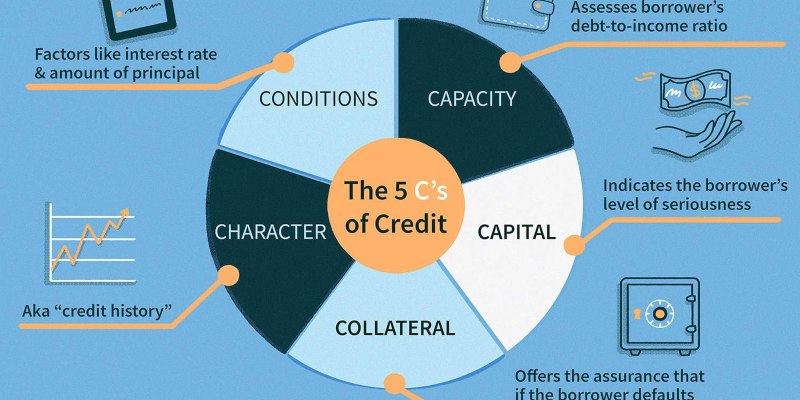A high credit score is one of the most important measures of your ability to repay loans and meet other financial responsibilities. The range of possible values for your FICO Score is 300 to 850, and you'll want to aim for a score closer to the middle. Within these bounds is where it can be found. Indicated by this band is the creditworthiness with which you are now credited. The Fair Isaac Corporation came up with this score, and it is based on several additional factors, all of which are assigned a number between 300 and 900. Achieving a higher credit score necessitates first knowing what factors into calculating that number.
What Kind Of Details Can You Find In Your Credit Report?
Lenders report your payment history and the amounts outstanding to the three major credit reporting agencies, Equifax, Experian, and TransUnion, as you make your monthly payments on credit cards, auto loans, mortgages, and other debts. The credit bureaus use this data to compile a consumer's credit report. To determine your credit score, companies like FICO and VantageScore use information included in your credit report and run it through their secret algorithms. Once a year, you can visit www.AnnualCreditReport.com to get a free copy of your credit report from each credit reporting agency. Your credit and payment history for current and closed loans and credit card accounts will be included in the report. For instance, in the case of a home refinancing, the report will include both the original mortgage loan and the new one.
How Do They Calculate Your Credit Score?

FICO is utilized in most lending decisions, and VantageScore, a partnership of the three credit bureaus, are the most widely used credit scoring model. Both organizations' secret formulas get ratings somewhere from 300 to 850. In 2021, a credit score of 716 on the FICO scale was typical. 1 Although their algorithms are different. Both businesses take the same five things into account when making their decisions:
- Credit report.
- The utilization rate of total credit.
- Credit reportage.
- Compositional credit.
- Increased access to alternative forms of financing.
The Payment History Is The Most Important Factor When Figuring Out A Credit Score.
The most important factor in determining your credit score is how well you have managed your finances in the past. Thus your payment history should be given the maximum weight (35%) possible. Credit cards, auto loans, retail store credit, student loans, personal loans, mortgages, and home equity lines are all examples of the kinds of accounts used to build a credit history. Your credit score will take a hit if you have filed for bankruptcy, had a home foreclosed on, or have had bills turned over to collections. Missed and late payments (more than 30 days overdue) can remain on a credit record for up to seven years. Due to the weight that payment history has in determining a person's creditworthiness, maintaining a good credit score can be as simple as making all your minimum monthly payments on time.
The Next Factor To Consider When Determining A Credit Score Is The Total Amount Of Available Credit

The ratio of your outstanding balance to your available credit is second only to your payment history in importance, at 30%. This calculation can be understood by thinking about: Consider the example of two credit cards, each with a $5,000 limit: your combined credit is $12,000. Assuming you have a balance of $500 on the first card and $300 on the second, your total consumption is $800, or 6.6% of your available credit. As a rule of thumb, if you utilize more than 30 percent of your available credit, your credit score will start to drop.
Conclusion
Depending on their specific field, lenders and creditors may utilize various credit score scales. In the case of an automobile loan, for instance, the credit score may be weighted more heavily on payment history than in the case of a mortgage or student loan. Lenders may also consider a score that considers data from all three main credit reporting agencies. Here are some of the broad criteria used in determining credit scores. The relative importance of each component in determining a credit score can change depending on the scoring model employed. From being granted a credit card to the interest rate you'll pay on a mortgage, your credit score has far-reaching implications for your finances. Knowing the amount and methodology might help you plan for a secure financial future.

Do I Qualify For Free Tax Filing? How To Avoid The Upgrade Trap

Understanding Nonforfeiture Clauses: A Simple Guide to 4 Payout Options

Progressive Business Insurance

Unpacking the Halo Effect: A Comprehensive Overview

Currency Valuation 101: What Really Affects Exchange Rates

The Impact of Direct Taxes on Economic Development

Exploring Landa: How This Real Estate Investment App Works and Its Benefits

A Look at North American Savings Institutions in 2023

An In-Depth Review of Goat Funded Trader in 2024

Quontic Bank vs. Ally Bank 2024: Comprehensive Comparison

In-Depth Review of TradingDiary Pro 2024: Is It Worth the Investment
